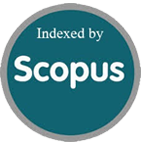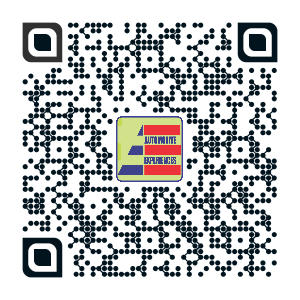AE-Connect
AE-connect is a rubric that contains tips for good practice in research and publication. This is an important part of our efforts to build communication from scientists and publication activists to the readers of Automotive Experiences. This rubric is open to anyone who will share their knowledge, spirit, research experiences, and tips (selected by Editor). You can send material via email: [email protected] or contact the editor via WA (+6282330623257).
Table of content
Scientific publication is "Academic Charity"
What's the difference between Free Access and Open Access?
How to make a great abstract: Best Practice
How to make a good introduction, acceptable to readers and reviewers?
Scientific publication is "Academic Charity"
Muji Setiyo 






Principal Editor in this journal, Editor in IJASTECH
 One of the main tasks of researchers is to communicate research findings to the wider scientific community. Therefore, the preparation of the manuscript as a communication medium should be done carefully because poor ideas or poor research processes cannot be saved by the presence of good scientific work. Conversely, decent ideas might not get proper attention from readers if they are presented poorly. Therefore, it should be noted that good manuscripts have three essential components: (1) the whole idea (content), (2) the execution of the work (process), and (3) the presentation of the work (results). Furthermore, scientific publication is one of the keys for researchers to disseminate a finding. In fact, a research report that is bound and kept in a university library may only be accessed by a very limited community. Meanwhile, there are millions of people worldwide who are looking for references to support their research, or in a wider scope, to help solve problems and create new solutions they are working on. Scientific publication is basically a knowledge/work transfer from researchers to the community, then at a deeper level of knowledge, the publication is not meant to be credit collection for researchers, but a noble process as an "academic charity" by researchers. Therefore, the highest appreciation for researchers is not salary, but new knowledge from their works, improvement of new methods in industry, and improvement of knowledge-based community welfare.
One of the main tasks of researchers is to communicate research findings to the wider scientific community. Therefore, the preparation of the manuscript as a communication medium should be done carefully because poor ideas or poor research processes cannot be saved by the presence of good scientific work. Conversely, decent ideas might not get proper attention from readers if they are presented poorly. Therefore, it should be noted that good manuscripts have three essential components: (1) the whole idea (content), (2) the execution of the work (process), and (3) the presentation of the work (results). Furthermore, scientific publication is one of the keys for researchers to disseminate a finding. In fact, a research report that is bound and kept in a university library may only be accessed by a very limited community. Meanwhile, there are millions of people worldwide who are looking for references to support their research, or in a wider scope, to help solve problems and create new solutions they are working on. Scientific publication is basically a knowledge/work transfer from researchers to the community, then at a deeper level of knowledge, the publication is not meant to be credit collection for researchers, but a noble process as an "academic charity" by researchers. Therefore, the highest appreciation for researchers is not salary, but new knowledge from their works, improvement of new methods in industry, and improvement of knowledge-based community welfare.
What's the difference between Free Access and Open Access?
Chrisna Bagus Edhita Praja 





IPR Researcher, Managing Editor in Varia Justicia
When people hear about free access, maybe most of them think about open access (OA) but that understanding is not right at all. Free access is not followed by open access. Indeed, free access is an important asset of open access publications, which means that everyone can access it without any cost. This makes an article in a journal more quickly distributed. However, "open access" is different from "free access". By definition, OA is "knowledge is open if anyone is free to access, use, modify, and share it". So, giving reuse rights is another important asset of OA. The third feature of OA is that the authors of open access publications hold the copyright on it instead of transferring all rights to the publisher. Maintaining copyright in publications means that you as the author can republish it on a personal website, in a repository, or reuse and modify parts of it. However, when other people want to reuse your paper, they need to ask for your permission, except when you provide your publication with a Creative Commons license. A Creative Commons license is a way to give permission to reuse it first. They are usually used in OA publishing. There are six different Creative Commons licenses: CC BY, CC BY-SA, CC BY-NC, CC BY-ND, CC BY-NC-SA, CC BY-NC-ND. The most open license is the CC BY license which allows users to redistribute, to make derivatives, such as translations, and even use publications for commercial activities, provided the appropriate credit is given to the author and that the user indicates whether the publication has been changed.
How to make a great abstract: best practice
Rully Charitas Indra Prahmana 







Managing Editor in JPM; Editor in Integration of Education


 Automotive Experiences (AE) is a peer-reviewed journal published by Universitas Muhammadiyah Magelang. This scientific journal specifically addresses findings, new methods, and research experiences on automotive technology, science, and engineering. AE has been indexed in
Automotive Experiences (AE) is a peer-reviewed journal published by Universitas Muhammadiyah Magelang. This scientific journal specifically addresses findings, new methods, and research experiences on automotive technology, science, and engineering. AE has been indexed in